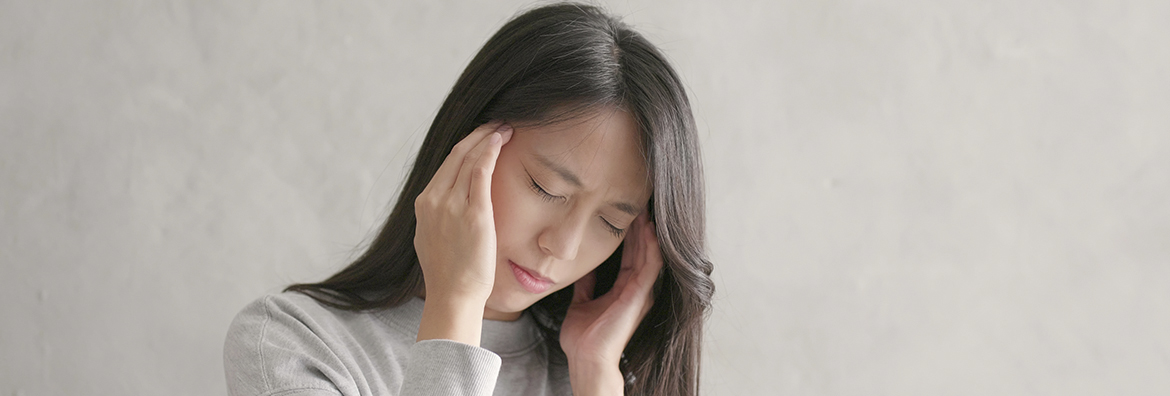
Vertigo (BPPV)
Vestibular dysfunction involves issues within the brain and inner ear that control balance and eye movements. The most frequently diagnosed vestibular disorder is BPPV (Benign Paroxysmal Positional Vertigo), which is also the most common cause of vertigo, or a false sense of spinning. BPPV can affect adults of any age but is most prevalent in the older adult population with 2.4% of people reporting these symptoms. This means for every 100 friends and family members that you have, 2-3 of them will likely develop this condition at some point in their lifetimes. Those with benign paroxysmal positional vertigo perceive a sense that the room is spinning, often occurring with head movements like leaning back when going to bed, looking up towards the sky or turning the head to check for oncoming traffic. Other possible symptoms include problems with hearing and vision.
How do vestibular disorders come about?
Vestibular issues can result from age-related changes, environmental conditions, disease, or head injuries that damage the processing areas of the vestibular system. BPPV is the result of crystals in the inner ear that sense gravity in different positions and canals that sense rotation. Although these are two separate systems, the crystals can fall from one system to another and throw off our equilibrium, giving a false sense of motion. Age-related changes over time or head injuries can loosen the crystals’ hold in the inner ear, causing them to release from their housing on a specific membrane in the ear and travel into a fluid-filled canal; the traveling of the crystal through the canal is what gives the individual the sense of spinning.
More simply, your inner ear is telling your brain that you’re moving when you’re really not.
When should I seek out treatment for vestibular issues?
BPPV is a condition that can lead from mild to highly debilitating symptoms that affect your overall safety and risk of falling. Unfortunately, MRI or medical imaging is not helpful in attaining an accurate diagnosis nor is medication effective in treating the underlying condition. Most commonly, patients suffering from BPPV are referred to physical therapists with a special interest in the vestibular system. A skilled physical therapist is familiar with testing and treating this condition and is trained in understanding the anatomy and disease characteristics to determine which ear and canal is affected.
How can physical therapy help?
PTs with a specialty in vestibular dysfunction are trained in canal repositioning which consists of a variety of head movements to free the crystals from the affected area. Physical therapy treatment can determine the source of the imbalance and/or the affected canal through neurologic, musculoskeletal, and vestibular testing. This typically prevents the need for costly diagnostic imaging. While the condition may slowly decline as you age, your physical therapist can quickly address the issue and resolve the symptoms to stop the spinning.
The goal of vestibular physical therapy treatment is to improve mobility and strength while reducing headaches, dizziness and other symptoms that may be experienced. Your PT will work with you one-on-one to assess and address your specific symptoms and impairments to better understand your needs and to craft a unique treatment plan to fit your goals and lifestyle. There will be an assessment of orthopedic, vestibular and CNS (Central Nervous System) systems to understand where deficits are most prominent.
Your custom physical therapy program may include:
• Manual therapy techniques to improve cervical vertebrae mobility
• Trigger point and soft tissue release of hypertonic “tight” neck muscles
• Postural correction and cervical proprioception
• Deep neck flexor muscle endurance training
• Gaze stabilization with head movement
• BPPV roll maneuvers to reposition the crystal
• Therapeutic exercises
• Patient education to provide tools to perform self maneuvers to maintain dizziness relief at home
• Screening for other vestibular conditions that may be associated with BPPV
Physical therapy can provide the necessary tools to treat vestibular dysfunction, helping you to return to a pain-free (and spin-free) life. Contact us to learn more about how we can provide relief from dizziness and balance issues associated with vestibular dysfunction.
Request an Appointment“The therapists are extremely knowledgeable regarding the treatment required. They are very professional and treat the well-being of the patient as a priority.”